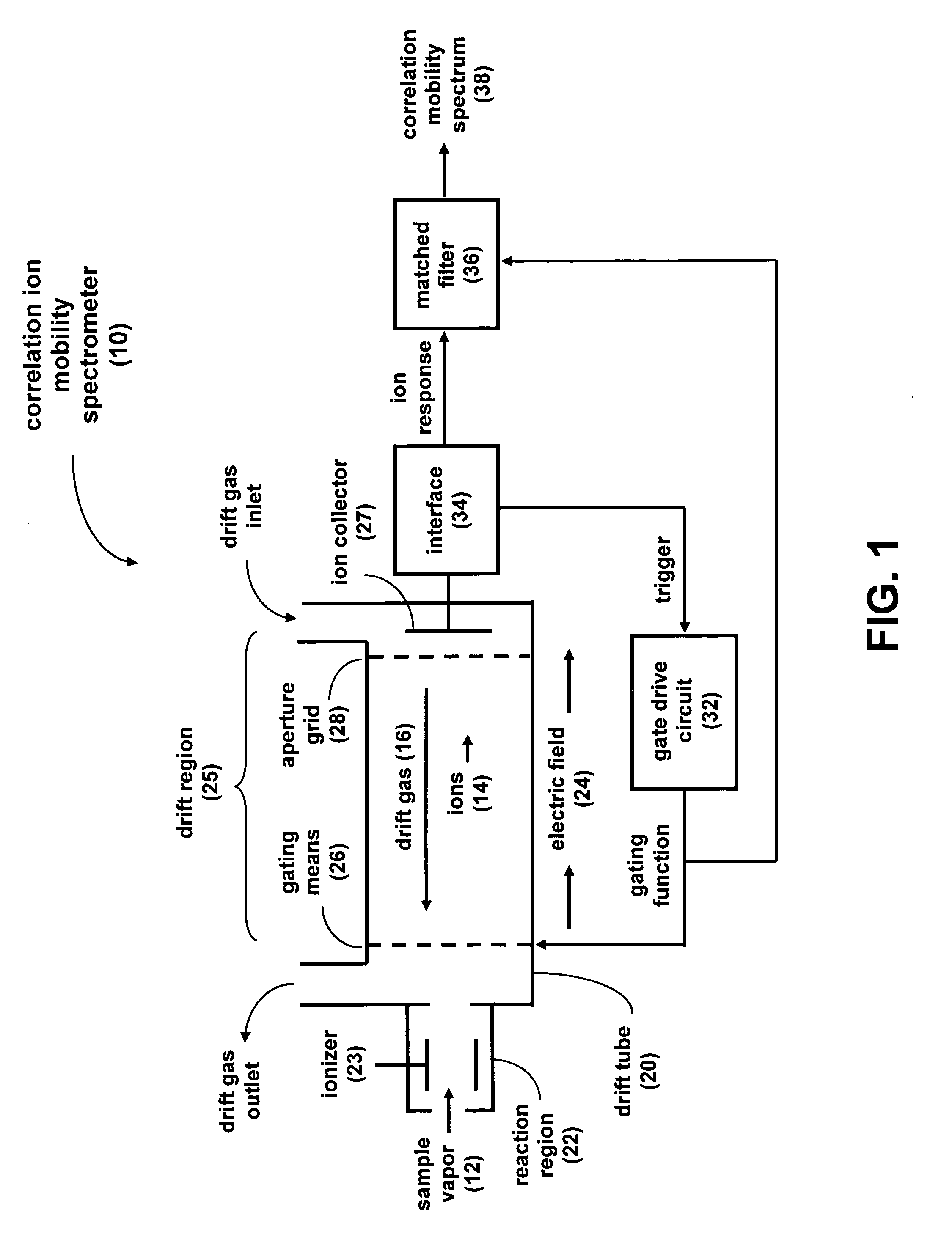Correlation ion mobility spectroscopy
a technology of mobility spectroscopy and correlation ions, which is applied in the field of correlation ion mobility spectroscopy, can solve the problems of large source of ions, limited application of averaging or ftims, and inefficient use of available ions
- Summary
- Abstract
- Description
- Claims
- Application Information
AI Technical Summary
Problems solved by technology
Method used
Image
Examples
Embodiment Construction
[0025]When the general IMS signal-processing problem is considered, it can be seen as very similar to RADAR processing. RADAR (RAdio Detection and Ranging) is an electromagnetic system for the detection and location of remote objects (targets). RADAR systems have been used since the late 1930's to give advanced warning of incoming ships, aircraft, and missiles. It operates by transmitting a particular type of radio frequency waveform to a target and detecting the waveform of the echo signal from the target. Once the transmitted pulse is emitted by the RADAR system, a sufficient length of time must elapse to allow the echo signal to return before the next pulse is transmitted.
[0026]In general, the returned echo signal has been reflected off the target of interest and multiple other ‘targets’ that may or may not be of interest. The ability to isolate individual or closely spaced groups of RADAR targets, or the range resolution of the RADAR system, is limited by the temporal length of ...
PUM
 Login to View More
Login to View More Abstract
Description
Claims
Application Information
 Login to View More
Login to View More - R&D
- Intellectual Property
- Life Sciences
- Materials
- Tech Scout
- Unparalleled Data Quality
- Higher Quality Content
- 60% Fewer Hallucinations
Browse by: Latest US Patents, China's latest patents, Technical Efficacy Thesaurus, Application Domain, Technology Topic, Popular Technical Reports.
© 2025 PatSnap. All rights reserved.Legal|Privacy policy|Modern Slavery Act Transparency Statement|Sitemap|About US| Contact US: help@patsnap.com



